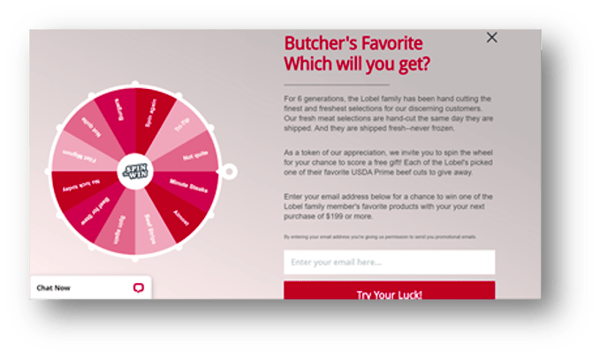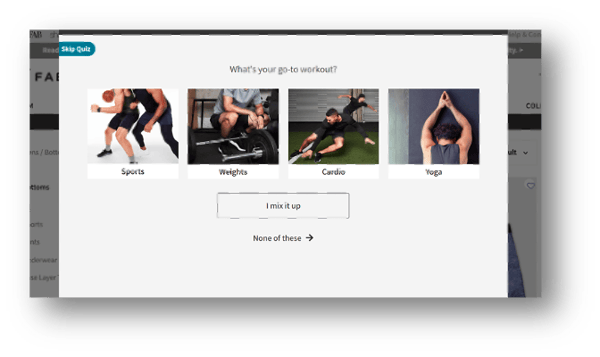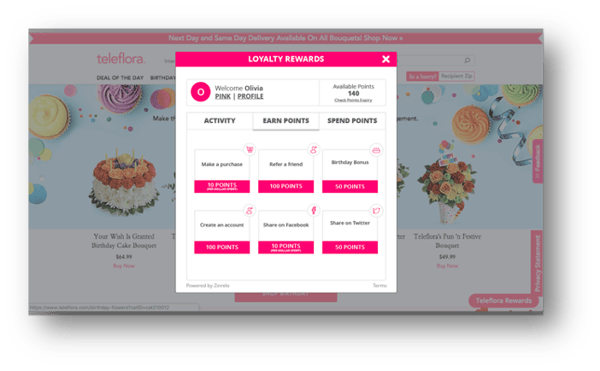Have you ever been to a website where you were immediately confronted by a spinning wheel?
This is an example of gamification: applying game-designed principles in a non-gaming environment. It plays into the fact that consumers respond well to achievements and rewards, and it’s a fun and interesting way to encourage greater engagement with your brand.
Marketers must always look outside the box to find creative ways to attract attention from an increasingly distracted audience. Gamification is one way you can differentiate your brand, and make customers think twice before considering other shopping alternatives.
Let's take a look at why gamification has such a positive impact on the online consumer, and how it can improve various areas of your business.
The Psychology of Gamification
Like in many aspects of life, our shopping decisions are often affected by emotional factors. When a consumer is motivated to repeatedly engage with a brand, it usually indicates that an emotional connection has been formed between brand and consumer. We see how brands can use psychology to form these connections with specific onsite techniques:
The use of product inventory alerts and countdown timers doesn’t just keep website visitors cognizant of important information; it creates the feeling of FOMO, or “fear-of-missing-out,” on a popular product, and encourages users to take action.
Special offers and discounts create feelings of exclusivity and reassurance in a consumer’s decision-making. Consumers feel confident that they are getting a good deal and not overpaying for something.
Similarly, gamification drives users to action because it satisfies the innate desire for entertainment, control, and a competitive edge. We are always looking for new challenges and new ways to prove we’re the best at something. The combined feelings of positivity and achievement creates emotional connections between brands and consumers, which can lead to sustainable long-term growth.
To use a real-life example, think of the McDonald’s Monopoly games. The games were so wildly popular that people bought McDonald’s just for the sake of playing. In 2011, McDonald’s attributed a 5.5% month-over-month growth of in-store sales to the Monopoly games. This creative and well-executed marketing strategy revolutionized the way brands think about customer engagement.
Elements of this gamification strategy can be brought online and applied with similar results. Unlike in-store games, on a digital storefront you have the ability to dynamically apply gaming designs at various stages of a customer’s lifecycle to get the most out of your efforts.
How Can You Incorporate Gamification into Your Digital Strategy?
Gamification can be applied to entice users to make repeated visits, to gain user feedback, boost conversion rates, or improve UX. To find out how it could best serve your business, start by identifying the most mundane and tedious areas of your customer’s journey. That might include tasks like updating billing information, searching for products, contacting sales or customer service, etc. Then ask yourself: how can this process be made more interesting for the user with gaming elements? What type of gaming elements would appeal to my target customer and what desired behaviors do I hope to achieve by using them?
Let’s walk through a few examples for inspiration:
Gamified Lead Capture Tool

The “spin-to-win” game is a popular gamified lead capture tool among online retailers. Lots of websites will have welcome messages inviting you to subscribe to a newsletter or receive a promo code. If your welcome message includes a plain background, a few lines of text, and a form-field, it will most likely be ignored by customers. Applying a gamified design like the example above from Lobels.com makes the experience interesting, fun, and, honestly, hard to resist. Not everyone is willing to submit their personal information, but if the perceived value is much higher than that of a newsletter – like a chance to win a free gift – then the toll of your email address seems worthwhile.
This is an especially useful tactic for capturing user consent and growing a mailing list. In the age of third-party cookie deprecation, the collection of first-party data, like email addresses, is vital towards being compliant with new data privacy laws and staying connected to prospects and customers.
Quizzes
When visiting Fabletics.com, visitors are asked to complete a questionnaire to help direct them to the products that will best suit their needs. This is a great way to increase engagement and collect customer preferences before offering personalized recommendations to new users.
 Similar to the “spin to win” design, this type of gamification helps brands gain valuable customer data to provide better experiences and facilitate brand loyalty.
Similar to the “spin to win” design, this type of gamification helps brands gain valuable customer data to provide better experiences and facilitate brand loyalty.
Progress Bars
Even something as simple as a progress bar is considered “gamification” and shouldn’t be overlooked. Consumers feel encouraged to complete tasks when they are given feedback and have the ability to track their productivity. They want to know exactly how far they have to go and what their next steps will be. This tactic works well for retaining customers through lengthy checkout processes, creating profiles, or brand surveys.
LinkedIn uses a progress bar to track the development of your professional profile, and to illustrate what actions you need to take to improve your standings. Users are awarded badges at the completion of each stage of profile development.
 Brands can use progress bars to incentivize users to reach a desired goal. If they know they’re only one or two actions away from an incentive like free shipping, they’ll be encouraged to continue shopping and boost their cart value.
Brands can use progress bars to incentivize users to reach a desired goal. If they know they’re only one or two actions away from an incentive like free shipping, they’ll be encouraged to continue shopping and boost their cart value.
Point-based Reward Programs
Loyalty programs are widely used today by some of the most popular brands, but many of them lack an element of competition. Gamifying your programs can differentiate yours from businesses that just send out loyalty cards. Bringing a loyalty program online allows for more customization with avatars, badges, trophies, and leaderboards. Consumers respond well to productivity and progress tracking, and are further motivated to enhance their social status within a community of other users.

Teleflora' s loyalty program awards points to users based on activities like social shares, profile creation, purchases, and referrals. Customers are given avatars and virtual trophies to track their progress, and in doing so, they are encouraged to make repeated site visits to reach new goals, complete new challenges, and strengthen their online profiles.
Customers should always have the ability to post their scores and achievements to social accounts. Rewarding social shares spreads brand awareness and encourages other users to explore your website.
Taking the Digital Experience to the Next Level
It is important to remember that eCommerce gamification should make sense contextually, and should blend with the branding and theme of your website. Consumers can derive motivation in many different ways, so understanding their behaviors and how they’ll respond to specific tactics is central to a successful gamified strategy.
Gamification, if nothing else, should reinforce a positive brand image. It demonstrates your brand’s willingness to go the extra mile to please customers, even those who are anonymous, by delivering a customer-first experience. Gaming isn’t only about selling – it’s about simply having fun and breaking up the monotony and tedium of website browsing.


